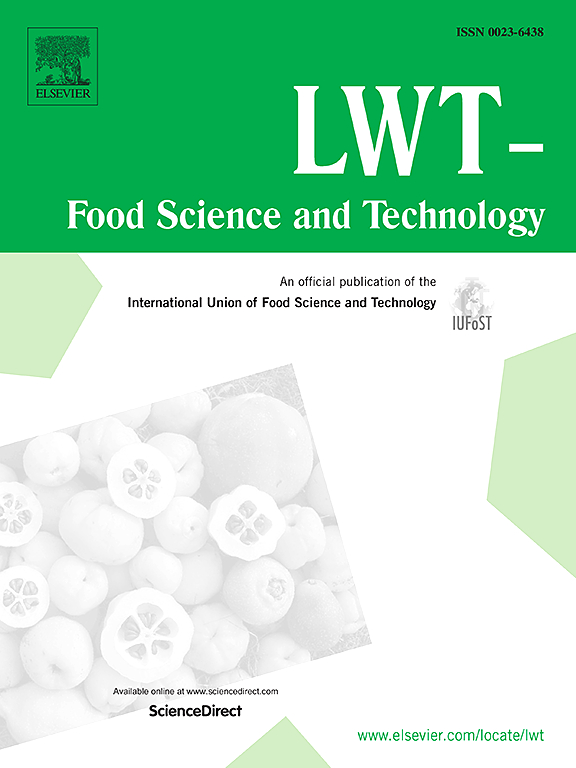Enhancing meat emulsion gels with soy protein fibril and red palm oil Pickering emulsions: The role of emulsification techniques in chicken fat substitution
IF 6
1区 农林科学
Q1 FOOD SCIENCE & TECHNOLOGY
引用次数: 0
Abstract
The study investigated the properties of soy protein fibril-red palm oil Pickering emulsions produced through high-speed shear homogenization (HSH) and ultrasound-assisted emulsification (UAE), focusing on their effects as fat substitutes on the characteristics of myofibrillar protein and meat emulsion gels. Compared to the emulsion produced by HSH, the UAE-generated emulsion demonstrated enhanced storage stability, higher apparent viscosity, a more pronounced absolute zeta potential, and smaller droplet sizes. Replacing less than 50% of the fat did not significantly impact the hardness, springiness, gumminess, or chewiness of the myofibrillar protein emulsion gel. However, when increasing the fat replacement ratio to 75% resulted in a noticeable decline in cohesiveness, gumminess, and chewiness, complicating the formation of a solid gel. Both emulsions were capable of replacing 50% of the chicken fat in a chicken meat emulsion system without significantly compromising texture properties, with UAE-fabricated emulsion exhibiting increased gumminess, chewiness, and resilience. Moreover, the incorporation of Pickering emulsion reduced cooking loss and oil oxidation in the chicken meat emulsion system, with the UAE-fabricated emulsion showing superior control over oil oxidation compared to the HSH-fabricated emulsion over 15 days of storage.
用大豆蛋白纤维和红棕榈油增强肉乳化凝胶:乳化技术在鸡脂肪替代中的作用
研究了高速剪切均质(HSH)和超声辅助乳化(UAE)制备的大豆蛋白原纤维-红棕榈油Pickering乳剂的性能,重点研究了其作为脂肪替代品对肌原纤维蛋白和肉乳凝胶特性的影响。与HSH生产的乳液相比,阿联酋生产的乳液具有更好的储存稳定性、更高的表观粘度、更明显的绝对zeta电位和更小的液滴尺寸。替代少于50%的脂肪对肌原纤维蛋白乳液凝胶的硬度、弹性、胶性或咀嚼性没有显著影响。然而,当脂肪替代率增加到75%时,粘结性、胶性和咀嚼性明显下降,使固体凝胶的形成复杂化。这两种乳剂都能够替代鸡肉乳剂体系中50%的鸡脂肪,而不会显著影响其质地特性,阿联酋制造的乳剂具有更高的粘性、耐嚼性和弹性。此外,皮克林乳剂的加入减少了鸡肉乳剂体系中的蒸煮损失和油氧化,与hsh乳剂相比,阿联酋制备的乳剂在15天的储存中对油氧化的控制优于hsh制备的乳剂。
本文章由计算机程序翻译,如有差异,请以英文原文为准。
求助全文
约1分钟内获得全文
求助全文
来源期刊

LWT - Food Science and Technology
工程技术-食品科技
CiteScore
11.80
自引率
6.70%
发文量
1724
审稿时长
65 days
期刊介绍:
LWT - Food Science and Technology is an international journal that publishes innovative papers in the fields of food chemistry, biochemistry, microbiology, technology and nutrition. The work described should be innovative either in the approach or in the methods used. The significance of the results either for the science community or for the food industry must also be specified. Contributions written in English are welcomed in the form of review articles, short reviews, research papers, and research notes. Papers featuring animal trials and cell cultures are outside the scope of the journal and will not be considered for publication.
 求助内容:
求助内容: 应助结果提醒方式:
应助结果提醒方式:


